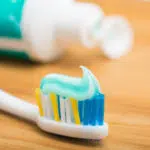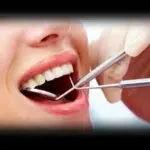Orthodontic Health Month is observed annually in October. In orthodontics, teeth are straightened or moved to improve their appearance, functionality, and ease of cleaning and flossing. Long-term maintenance of healthy teeth, gums, and joints is made simpler by equally distributing pressure over all of your teeth. Some of the most frequent conditions requiring orthodontic treatment include crooked teeth, protruding teeth, or an incorrect bite. If ignored, these conditions may result in additional oral health issues like tooth loss, decay, gum disease, and even jaw issues.
History of National Orthodontic Health Month
The significance of having healthy and well-aligned teeth may be traced back to 1000 B.C. To shift teeth into better alignment, the ancient Egyptians and Etruscans used a substance produced from animal intestines. An ancient Roman scientist found that putting finger pressure on teeth for a long length of time over months would help shift teeth into a new position.Early in the 1770s, reports of the first more contemporary orthodontic procedures appeared. Pierre Fauchard, a French dentist and surgeon, created the Bandeau. It was a horseshoe-shaped device that created a natural arch in the mouth. Francois Delabarre later created the wire crib in the early 1800s, which was used to help move teeth into better alignment. By combining microscopic rubber tubing and wire cribs, dentists were able to align the jaw and teeth at the same time in the middle of the 19th century.The era of orthodontics that we are more familiar with now began in the early 1900s. Dentists would wrap different materials (such as ivory, wood, copper, or zinc, and then gold or silver) and connect them with bands that helped press the teeth into the proper place, according to their preference. Because it was less expensive and more flexible than the other materials previously used, stainless steel gained popularity in the 1970s. Orthodontics saw a paradigm change with the introduction of invisible braces in the late 1990s. Clear retainers were utilized to help teeth be kept properly in addition to brackets that were placed inside of people’s teeth to make them more aesthetically pleasing. Following this, the American Association of Orthodontists proclaimed October as National Orthodontic Health Month.
National Orthodontic Health Month timeline
The Bandeau is invented by a French surgeon and dentist, Pierre Fauchard.
Francois Delabarre devises the wire crib, which is used to assist in shifting teeth into better alignment.
The American Association of Orthodontists is formed.
Stainless steel becomes increasingly popular because it is less expensive and more flexible than the other materials previously employed.
National Orthodontic Health Month FAQs
Do orthodontists attend medical school?
It takes about four years at an approved undergraduate school, four years at an approved dental school, and two to three years in a certified orthodontic residency program before they are licensed to practice.
How long does it take to become an orthodontist?
Becoming an orthodontist takes many years of study. After high school, the average number of years it takes to become an orthodontist is 11.
Is it difficult to become an orthodontist?
In reality, being an orthodontist is a more difficult process than you might think. There are academic and financial obstacles to overcome, both of which are manageable.
How to Observe National Orthodontic Health Month
-
Make an appointment with an orthodontist
You can observe National Orthodontic Health Month by making an appointment with an orthodontist. Orthodontic care ensures that teeth work properly and helps people have attractive smiles. You can bite, chew, and talk more easily when you have a good bite. Misaligned teeth are more difficult to keep clean and may wear tooth enamel abnormally, necessitating time-consuming and costly dental work.
-
Avoid bad foods
You can also mark this event by avoiding sweets and candy that can destroy your teeth. Healthy eating is essential for oral health. Nutrition has a direct impact on your teeth and gums. Poor nutrition may lead to tooth decay, cavities, and gum disease.
-
Post on social media
Use the hashtag #NationalOrthodonticHealthMonth in your social media posts to mark this occasion and spread awareness. This will guarantee that more people go to the orthodontist.
5 Fun Facts About Teeth
-
Teeth can’t repair itself
Because they are covered in enamel, which is not living tissue, teeth are the sole portion of the human body that cannot heal itself.
-
Hardest part of the body
Tooth enamel is the hardest part of the entire body; even harder than bone.
-
730 liters of saliva
Your mouth can produce up to 730 liters of saliva per year.
-
Teeth are unique
No two people have the same set of teeth; they are as unique as your fingerprint.
-
The longest tooth ever found
The longest human tooth ever found was extracted in Singapore in 2009 and measured 1.3 inches in length.
Why National Orthodontic Health Month is Important
-
It helps us feel more confident
When we greet someone, their smile is one of the first things we notice. It also plays a role in how we remember and communicate with one another. Confidence in your smile may significantly improve your quality of life, which is why it's so crucial to work with an orthodontist to develop your most beautiful and healthy smile. A stunning, straight smile can help you exude confidence and lessen stress in addition to making it easier to clean your teeth and gums.
-
It reminds us to get our kid's teeth checked
This day serves as a reminder to parents to have their kid's teeth checked. Orthodontists treat kids for many problems, including having crowded or overlapping teeth or having problems with jaw growth and tooth development. These tooth and jaw problems may be caused by tooth decay, losing baby teeth too soon, accidents, or habits like thumb sucking.
-
It helps prevent oral complications
Teeth crowding is a common dental problem where the teeth are clustered together because there’s not enough space. This makes brushing, as well as flossing difficult and may lead to gum problems in the future. Having this checked early on helps prevent the onset of oral complications.
National Orthodontic Health Month dates
| Year | Date | Day |
|---|---|---|
| 2023 | October 1 | Sunday |
| 2024 | October 1 | Tuesday |
| 2025 | October 1 | Wednesday |
| 2026 | October 1 | Thursday |
| 2027 | October 1 | Friday |





































































































































